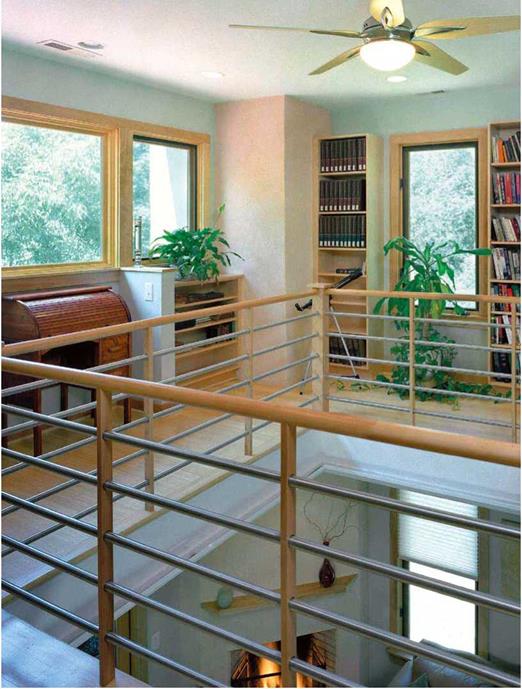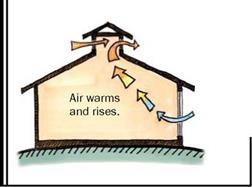Let the House Breathe a Bit
When mechanical systems are sized for a home, they’re often designed with the mind-set that the house is never open to the elements. I find this is rarely true; in fact, most of my clients very much want to connect their home’s indoor and outdoor spaces. Doesn’t it make more sense, then, to
I Overhangs
design houses to work in partnership with their environment rather than to function with no regard for it?
To understand best what ventilation can do for your home, you need to remember two simple principles: One is that heat always moves from hot areas to cold areas, and the other is that warm air rises.
If you are designing a new house, spend some time on the site, learn where the breezes come from, and use that information when locating the windows on your house. Use casements that swing open to help catch breezes. Having different units open in different directions allows you to take advantage of winds coming from multiple directions.
|

![]()

![]()
 The simplest form of smart ventilation is cross ventilation. When you open a window in your home, you can let in a slight breeze, but when you then open a window on the opposite side of the room, the strength of that through-breeze increases significantly. If the entry window is small and the window through which the breeze exits is large, it increases in speed. A cool breeze in the evening when the sun is going down absorbs the heat in your house (heat moving from hot to cold); as the air heats up, it rises. So the best way to let hot air out of your house
The simplest form of smart ventilation is cross ventilation. When you open a window in your home, you can let in a slight breeze, but when you then open a window on the opposite side of the room, the strength of that through-breeze increases significantly. If the entry window is small and the window through which the breeze exits is large, it increases in speed. A cool breeze in the evening when the sun is going down absorbs the heat in your house (heat moving from hot to cold); as the air heats up, it rises. So the best way to let hot air out of your house
is to have a large opening up high. The greater the distance between the intake and the output, the better.
This air movement is called the chimney effect (see the drawing on the facing page). I use it in my three-story home. When a cool breeze comes at the end of the day, I open the windows downstairs and the French doors on the third floor and wash out the entire house in minutes. The effect is heightened by an open plan, a small footprint, and a staircase in the middle that makes the whole house very much like a chimney.
Vaulted ceilings and high windows in a clerestory or cupola also promote the chimney effect. The sloped ceiling encourages air to move to the top of the cupola, and operable windows on both sides allow cross ventilation.
If you live in a dry climate, you can boost your home’s ventilation cooling with water cooling. Dry air moving over water absorbs moisture and subsequently drops in temperature. (This is how evaporative coolers work.) Placing windows near a pond or another water feature lets you capture the cool air as it comes off the water and into the house. You get free air-conditioning along with the soothing bonus of a water view.






Leave a reply